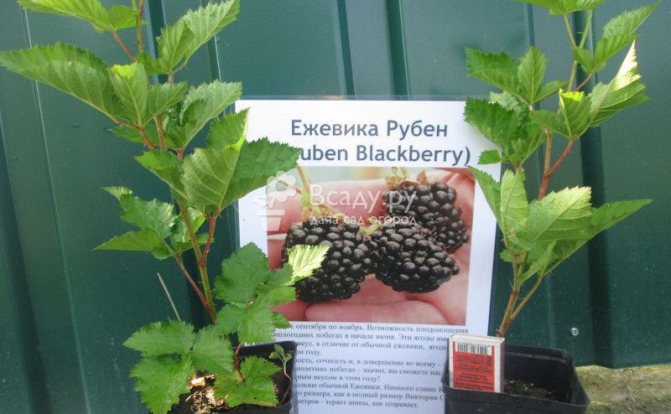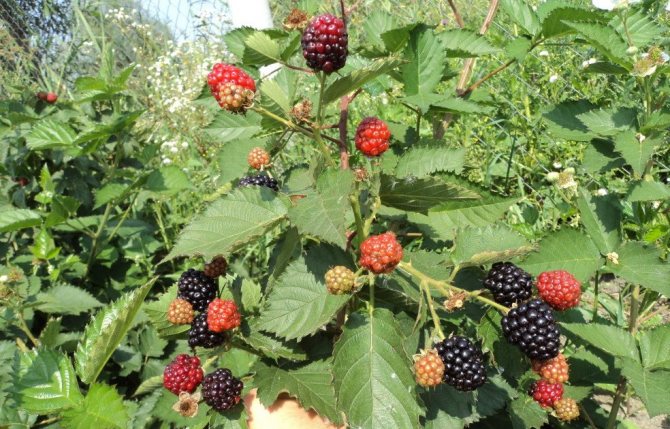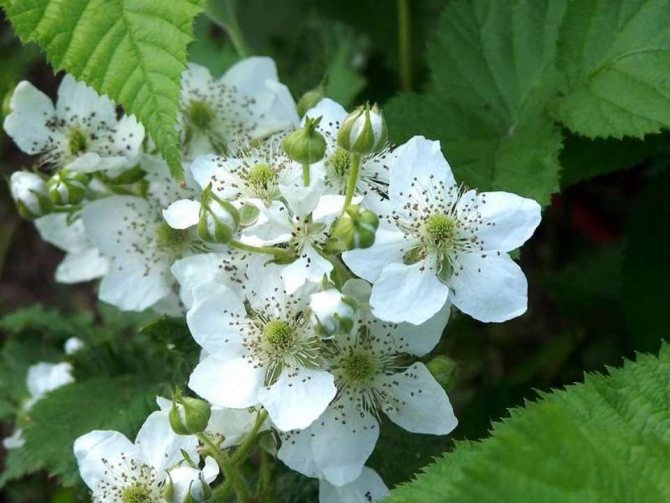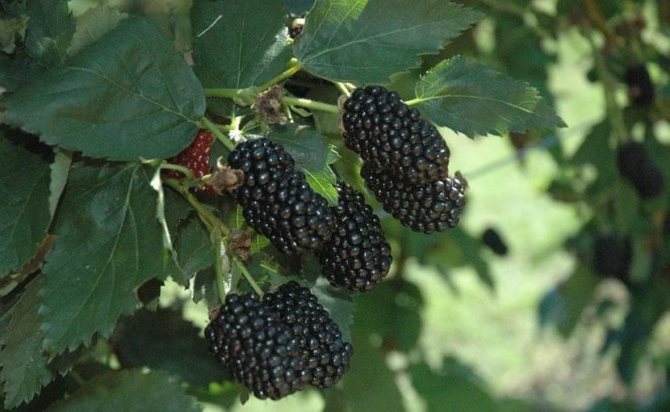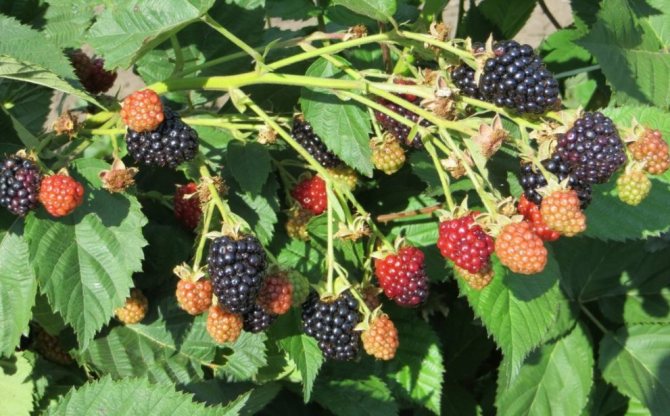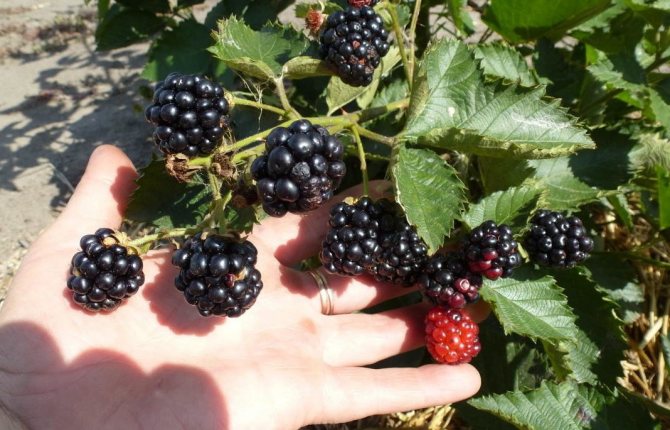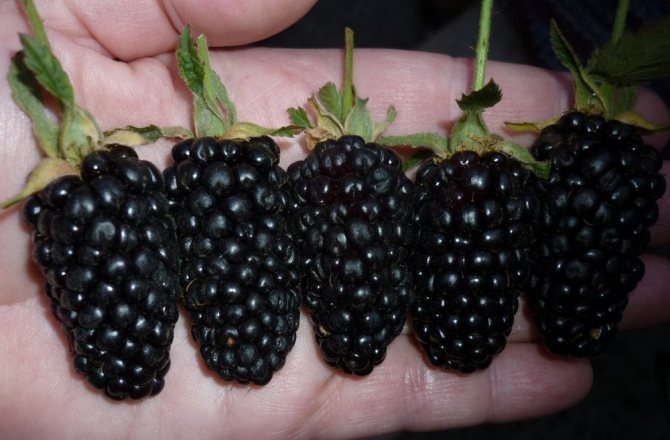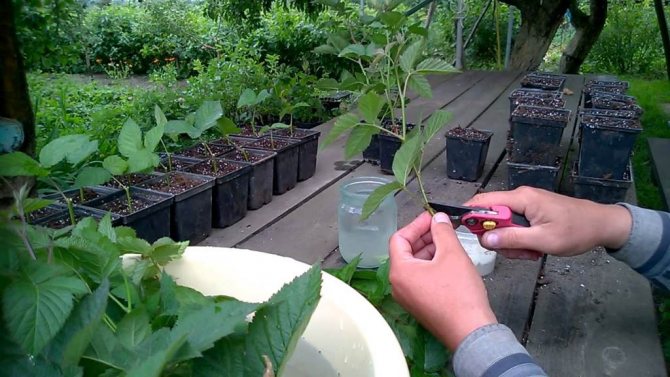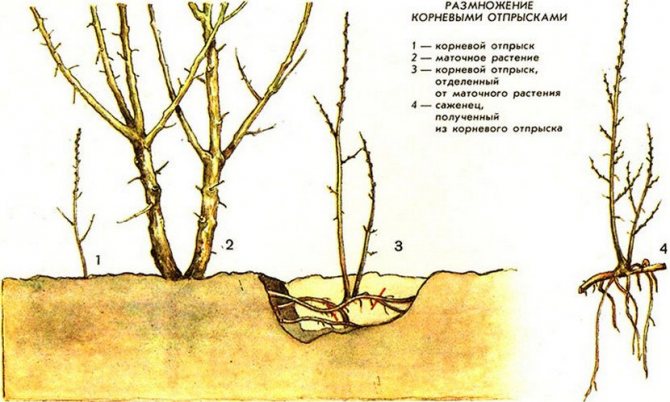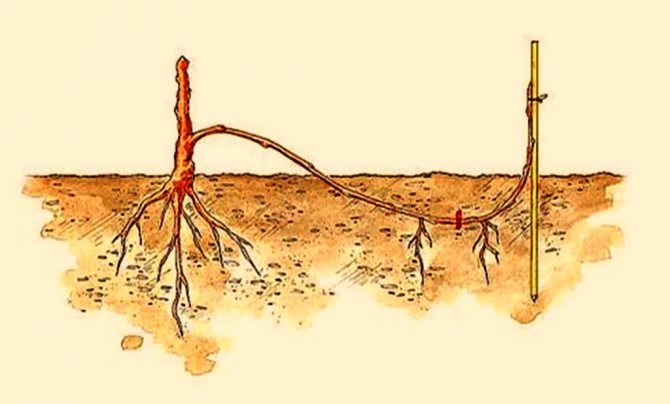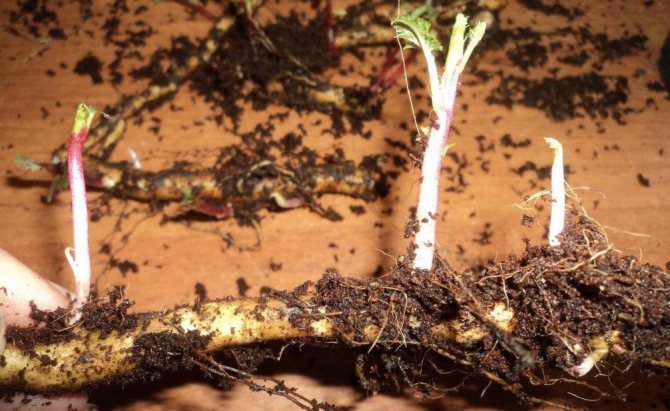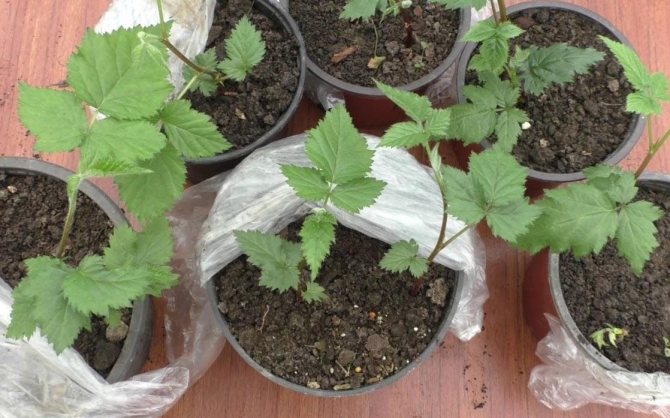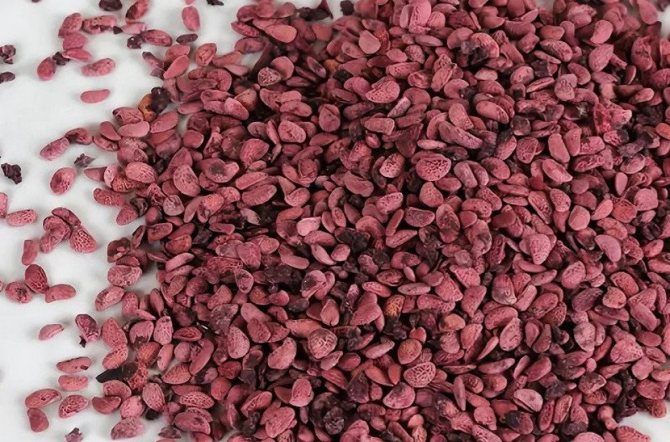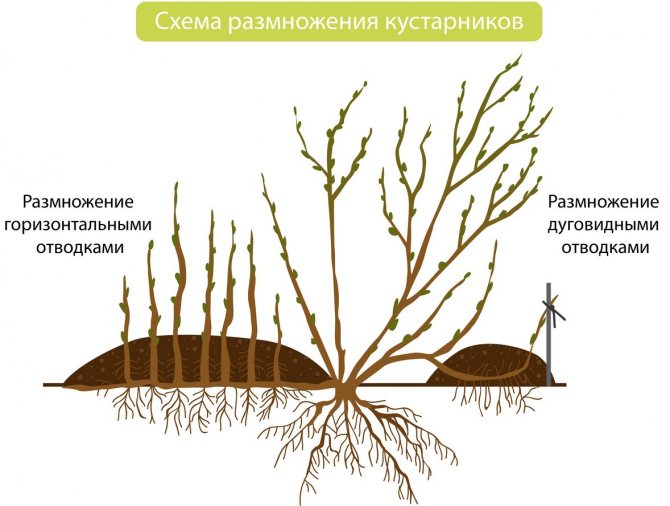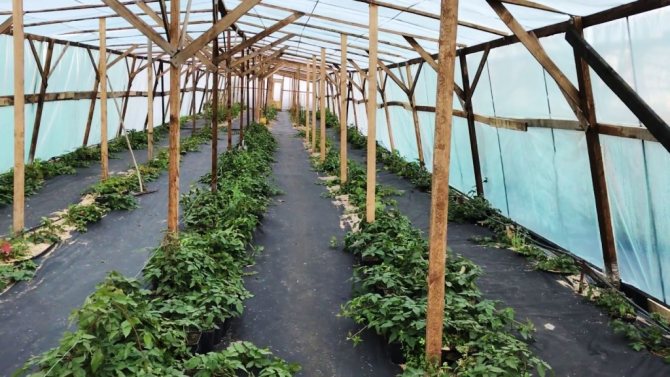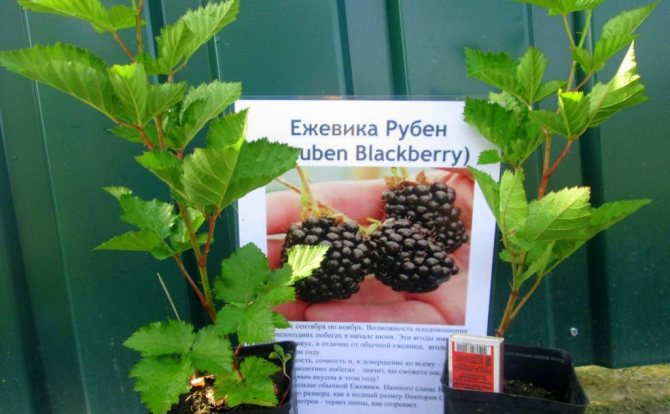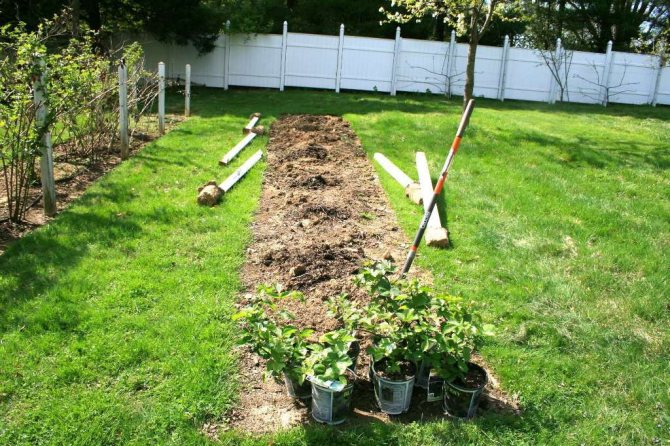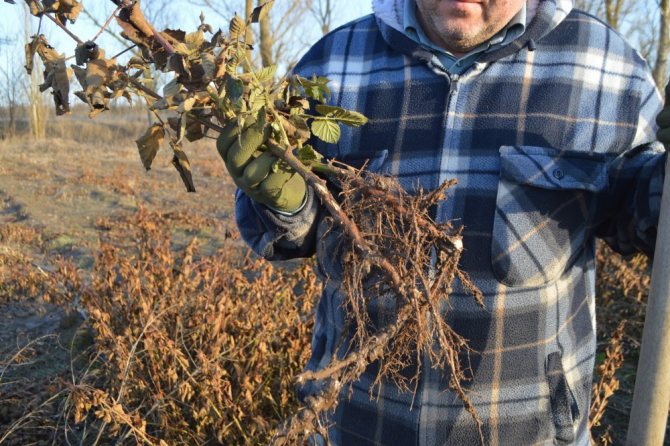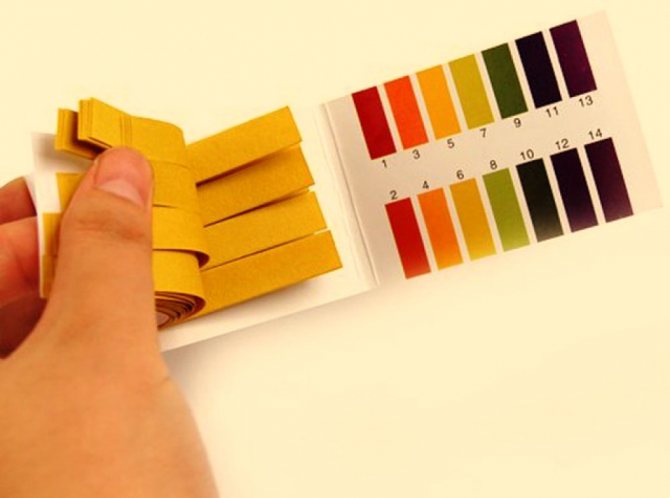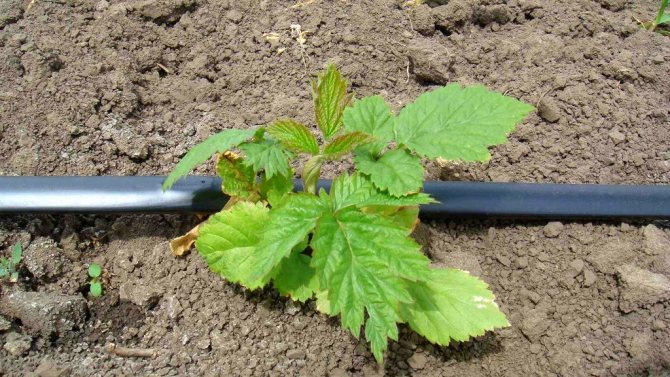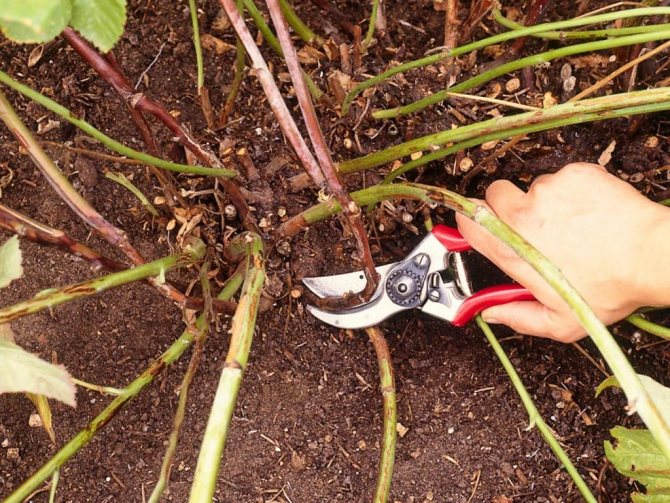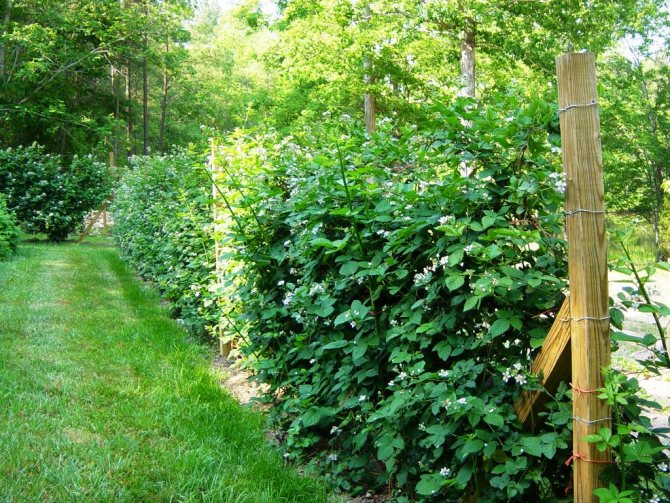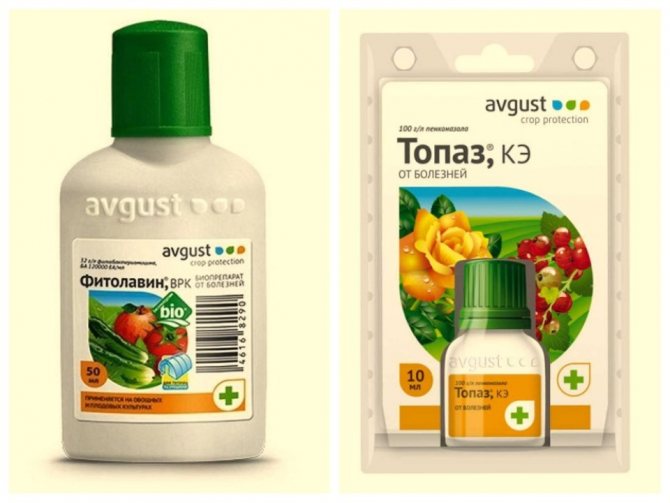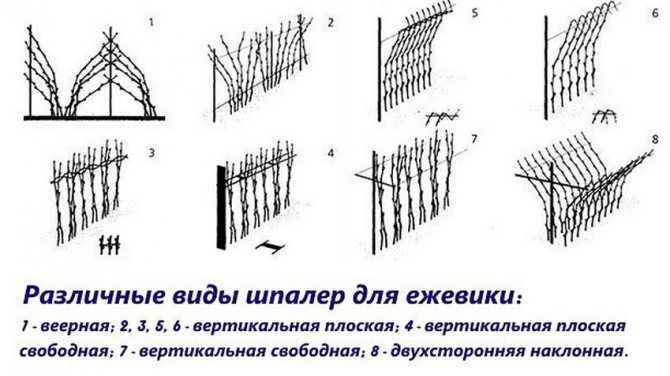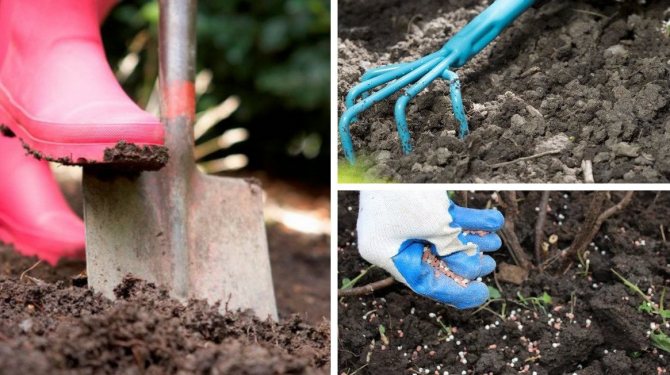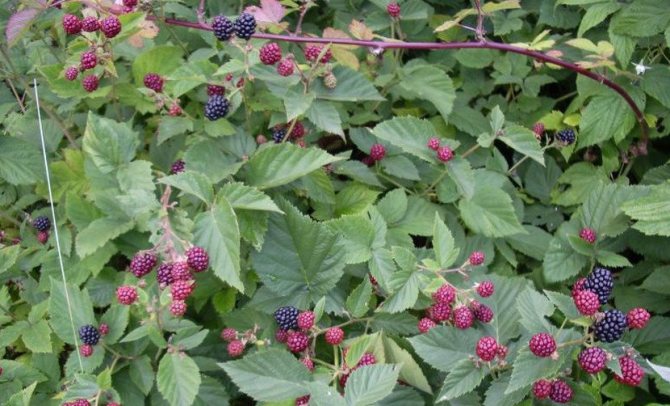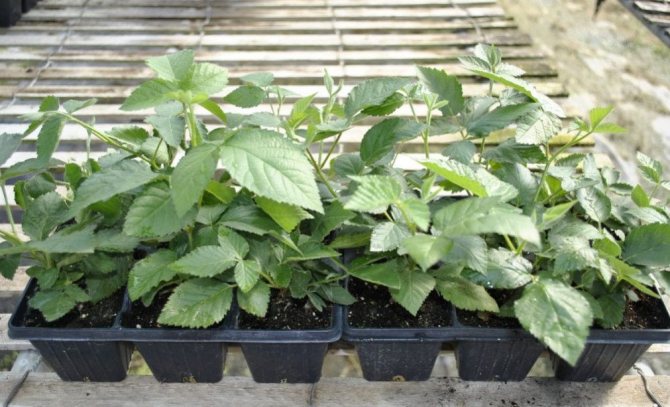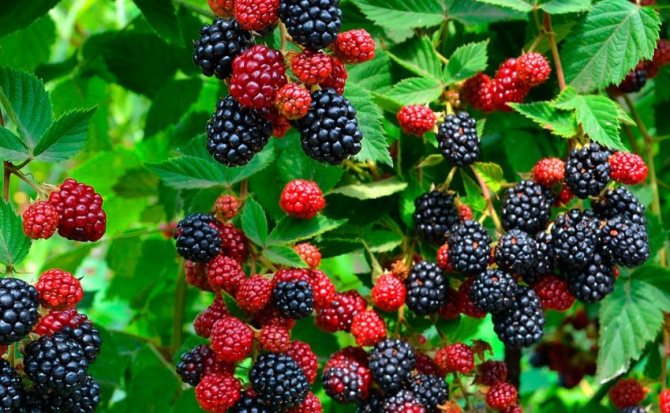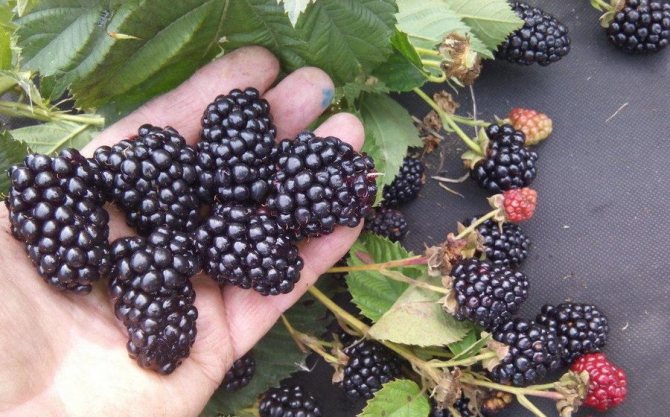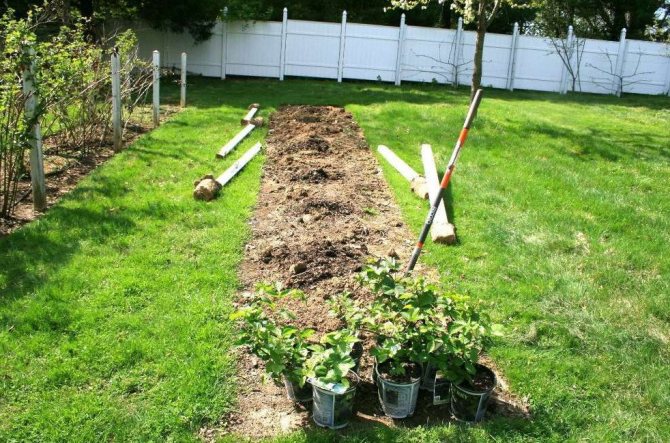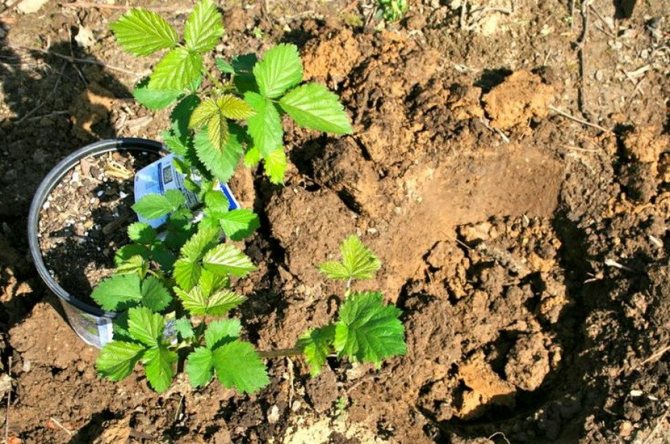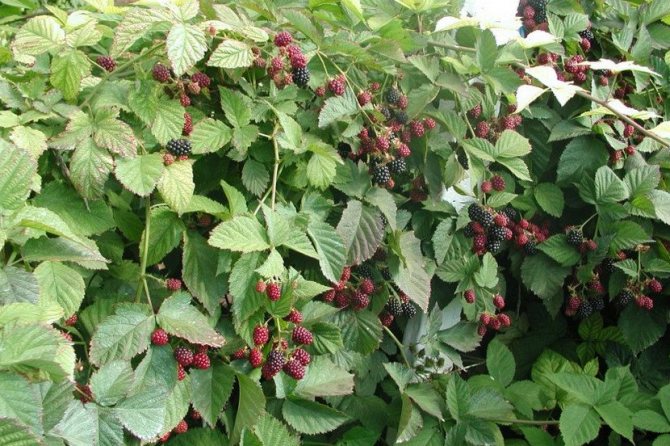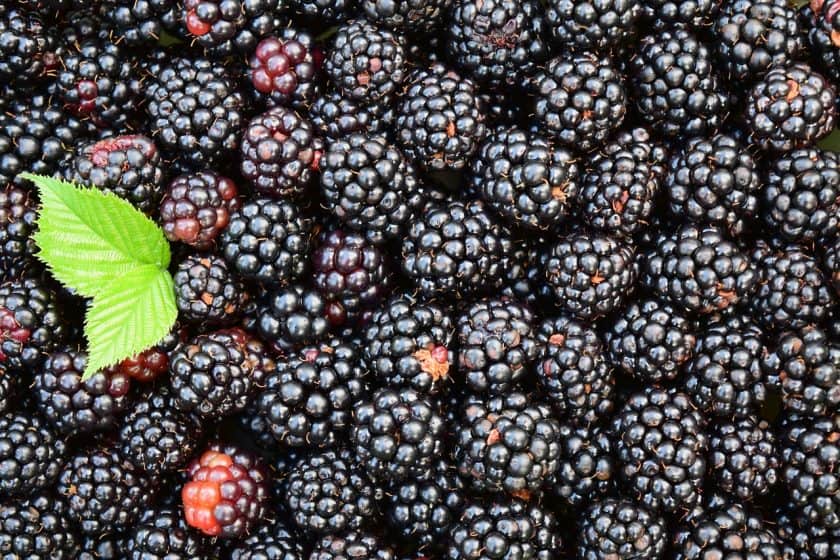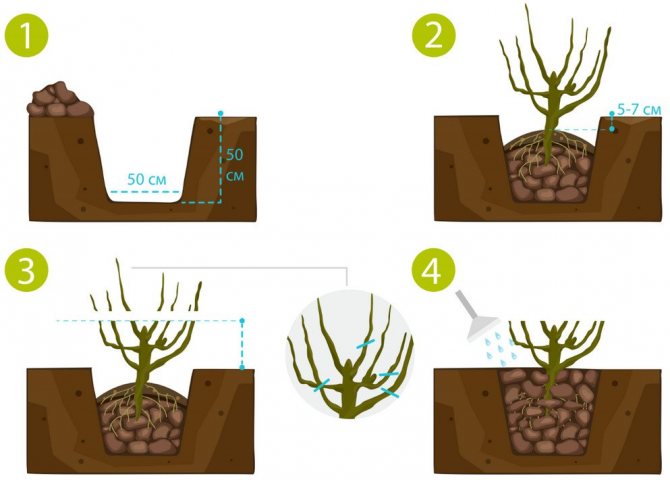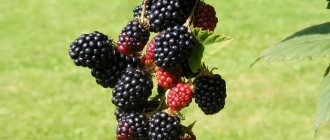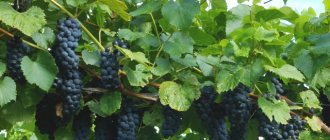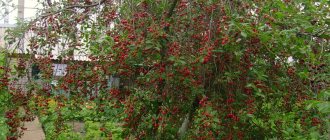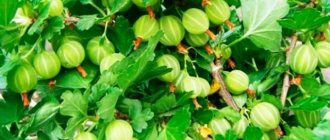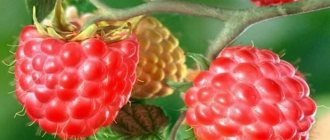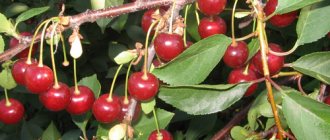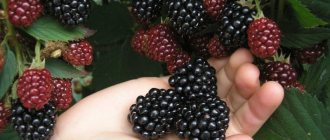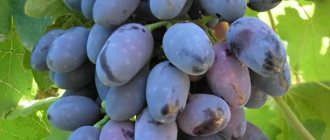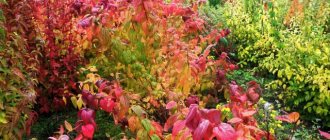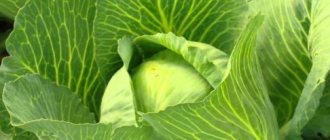Blackberry Ruben
About 10 years ago, the first remontant blackberry variety Reuben appeared on the market. Blackberry Ruben bears fruit on the shoots of the first year, like autumn raspberries. The repairing blackberry Ruben differs from the usual garden blackberry in its rapid growth and noticeable height of the bush, as well as in the huge size of the berries (see photo). But are the Ruben blackberries so good compared to other garden blackberries? To help gardeners decide on a possible purchase of Ruben seedlings, I decided to write a review, sharing 3 years of experience in growing it.
Breeding history
The creation of the Reuben Repair Blackberry is an example of a fruitful collaboration between the University of Arkansas and the UK's largest European nursery, Hargreaves Plants Ltd. First, an American breeder, Professor John Ruben Clarke, crossed in 2005 the highly productive lines (crosses) of the blackberry APF-44 and 2292T2. The work on the hybrid continued in the English nursery, where in 2006 the HPB3 seedling was selected for further work.
As a result of selection, a high-yielding blackberry variety Reuben was obtained, named after Professor Clark. It passed the tests and entered the market in 2009. In Russia and the countries of the former Soviet Union, the Reuben blackberry variety appeared in 2011-2012.
conclusions
Breeding remontant blackberry varieties has many advantages:
- they are able to bear fruit twice a year;
- the shrub is very decorative, has very beautiful and lush flowers with a wonderful aroma, attracting bees to the garden;
- blackberry plants are compact and unpretentious to care for, practically not susceptible to diseases, and with the onset of autumn cold weather they are very easy to cut;
- preparation for wintering is not difficult - only the roots are covered;
- many remontant varieties lack thorns, which makes harvesting easier.
Description of berry culture
Blackberry Ruben is a promising large-fruited variety. It can be grown not only as a berry crop, but also to decorate the garden.
General understanding of the variety
Blackberry Ruben belongs to the upright varieties, the so-called kumaniks. Its shoots in length can reach from 1.6 to 2.5 m. The shape of the bush depends on the area of feeding and forming. With thickened plantings and a vertical garter of lashes, the plant will be compact, it will take up little space. If the distance between the bushes is left greater than 1.3 m, you can grow a powerful, beautiful blackberry.
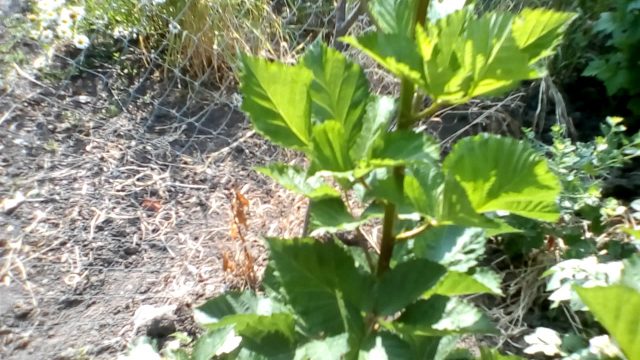
The shoots of the Ruben variety are straight, do not weave. Young growth is green, annual whips with mature wood are light brown in color. The shoots are covered with thorns along the entire length, which, after the berries ripen, begin to crumble. This makes it easier to shelter for the winter and harvest.
Side shoots grow in sufficient quantity and are easy to shape. The root system is powerful.
Berries
Ruben blackberry forms very large flowers - their diameter exceeds 6 cm. The berries are round-cone-shaped, beautiful, with a diameter of about 4.5 cm, collected in clusters of 8-10 pieces. The weight of the fruit is impressive - up to 14.5 g, the color is black, with a glossy sheen.
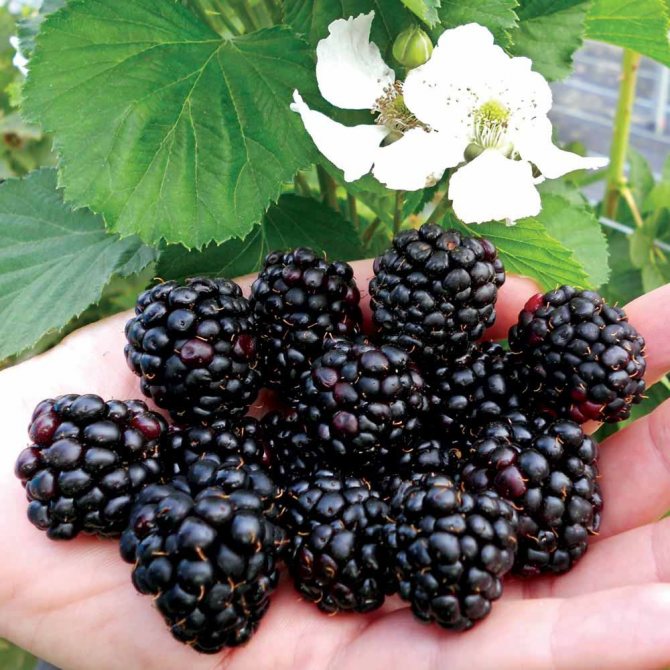

The taste of the berries is sweet, with an appropriate mild sourness and delicate aroma. The fruits are firm but juicy. Tasting score - 4.5 points. But there is no unity in the gardeners' reviews of the Ruben blackberry variety. They consider the taste to be excellent, while others argue that berries should not be more than 3.6 points.
This variety is remontant and, under certain conditions, allows you to harvest two crops per season.
The main advantages and disadvantages of the variety
Among the positive characteristics of Ruben's blackberry, experienced gardeners note:
- renovation;
- not exactingness to care;
- there is no need for arranging supports, a garter;
- large-fruited;
- high palatability of fruits;
- extended period of fruiting (from August to frost);
- high productivity of the bush;
- does not cause difficulties when sheltering for the winter.
But Ruben's blackberry also has its weaknesses, among which:
- low level of drought tolerance;
- insufficient winter hardiness;
- cannot stand excessive heat.
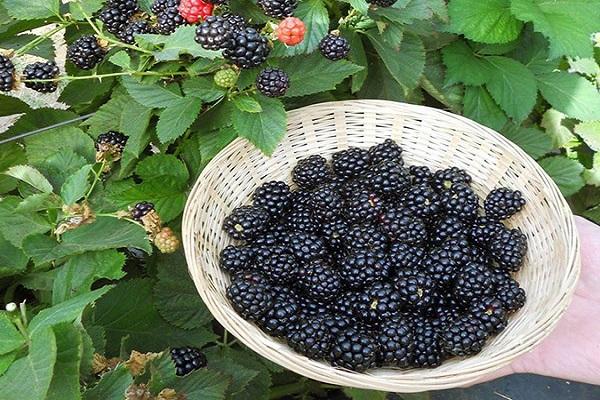

Characteristic
The characteristics of Ruben blackberries grown in the post-Soviet space will be adjusted, because the variety belongs to the newest. But some conclusions can be drawn today. Immediately, we note that there is no consensus about the variety. Some praise him, others scold Reuben and advise him to urgently replace it with another blackberry.
Perhaps the negative reviews are caused by the fact that the Ruben variety has only its inherent characteristics. If they are not taken into account, the cultivation of this blackberry will not be successful.
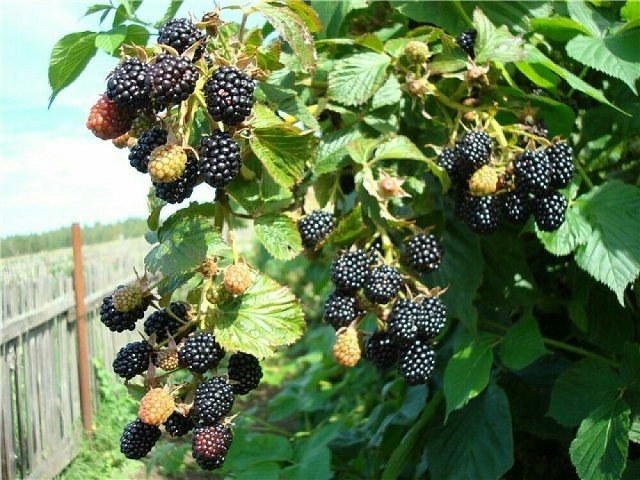

Main advantages
The Ruben variety is quite whimsical to care for. Its winter hardiness is low, bushes require compulsory shelter even in most of the territory of Ukraine, if the crop is grown as a remontant. In Central Russia, it is better to cut out all the shoots for the winter and be content with one harvest.
The drought resistance of the Reuben variety is also average. This blackberry needs to be watered regularly, especially in the absence of rainfall. Heat resistance is generally low - the flowers stop pollinating, which we will discuss below. In addition, the manufacturer advises planting Ruben in partial shade. Time and the experiments of enthusiasts will show what this means in our conditions. Perhaps the Reuben blackberry just needs to be in the shade for part of the day, like a hydrangea. Or maybe it needs to be planted under the canopy of large trees with an openwork crown or artificial structures so that the growing site looks like an undergrowth.
Ruben's blackberry has the same requirements for the composition of the soil as other varieties. Its shoots are covered with thorns, which begin to crumble after the berries ripen. Fruits are dense, do not lose marketable qualities for a long time and are well transported.
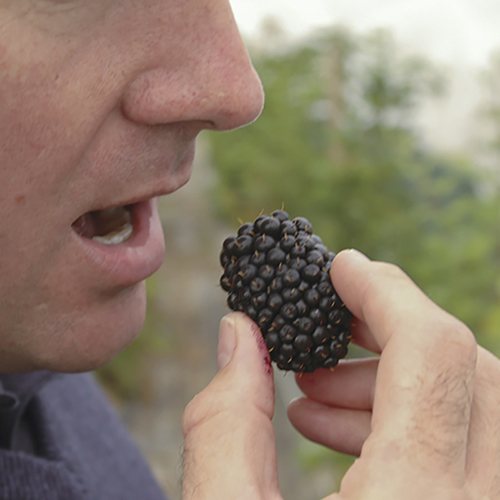

Flowering period or what to do with Ruben
Problems with the Ruben blackberry variety begin from the moment the buds open. Let's figure it out in stages.
Temperature and humidity
I would like to say separately about the heat resistance of the Reuben variety. To begin with, at a temperature of 27-30 degrees, the pollen of this blackberry becomes sterile. In the southern regions of Russia and Ukraine, such a heat may come as early as May, and end in September.
It turns out that where it is hot in summer, on a young growth, ovaries may not appear at all. When the Ruben variety is grown as a once-fruiting crop, mass flowering begins in June. If you save last year's shoots for two harvests, the buds on the young sticks will open even later.
In addition, at the time of pollination, high air humidity is needed. Of course, it can be created artificially, including fogging installations or by stretching special nets that stabilize ultraviolet light. But do they all have them? And does it make sense to buy and install additional expensive equipment if there are enough blackberry varieties that do not have problems with pollination?
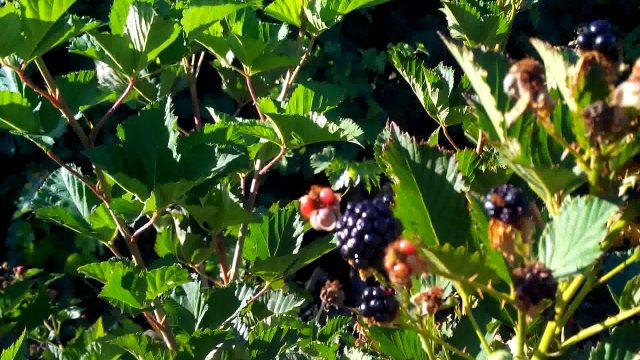

Advice! Spraying with boric acid solution can increase berry setting in hot weather. Only blackberries will have to be processed often - the flowers do not open simultaneously.
Is it a remontant Ruben variety?
In the northern regions, the second crop simply does not have time to ripen. So the cultivation of Ruben blackberries in the Moscow region, for example, as a remontant culture, does not make sense.The largest harvest can be collected only by mowing the shoots at the root for the winter, and the harvest can be harvested from the growth of the current year.
The conclusions are disappointing. It is impossible to grow Reuben blackberries in the open field as a remontant crop. In the north, due to the fact that the second harvest will go before winter. In the south, it is guaranteed that you can get berries only from the shoots of the last season. At an annual growth rate, pollination may not occur at all. This means that if you grow Reuben blackberries as a remontant, you will get half the harvest. If you cut off all the whips for the winter, you risk being completely without berries.
conclusions
So what's the deal? Did the breeders of the two countries - the United States and the United Kingdom - jointly bred a variety that is worthless? After all, if you grow Ruben's blackberry only in a temperate and cold climate as a once-fruitful crop, what to do with its low resistance to frost? And why does she need renovation?
And everything is extremely simple. The variety is intended for indoor use - only there the Reuben blackberries will reach their full potential. In the greenhouse, the lighting can be adjusted, and the temperature can be made as needed and the humidity can be increased.
The rest of the gardeners can experiment with the Ruben blackberry variety on their site. Through trial and error, and she can, if desired, create acceptable conditions. It is a pity that so far there is little experience in adapting this variety.
Yield indicators, fruiting dates
The Ruben variety belongs to remontant. This means that the first harvest from last year's shoots begins to be harvested in mid-June, and ends by the end of July. The second ripens by the beginning of autumn on a young growth. In the northern regions, most of it will not have time to keep up. In greenhouses, Ruben blackberries can begin to bear fruit (depending on agricultural technology) from mid-April to May inclusive.
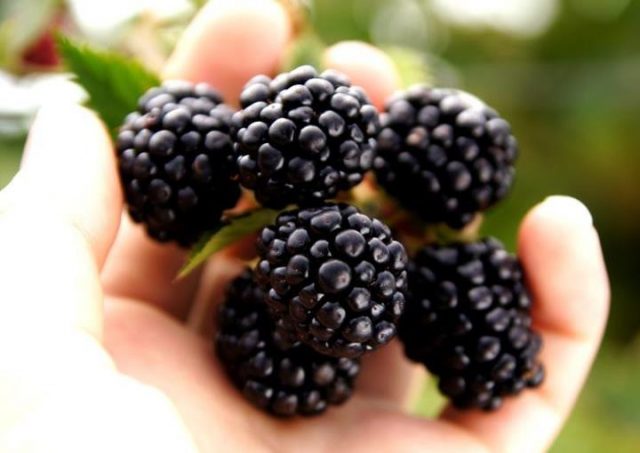

You can also grow the variety in a culture that yields a crop once a season. At the same time, the Reuben blackberry is cut to the root in the fall, which avoids the laborious shelter of the shoots for the winter. The crop ripens in the middle of summer at the growth rate of the current year. In the southern regions, flowers may not fertilize due to high temperature and low humidity - essential conditions for successful pollination.
Important! The total yield for the year on the remontant blackberry will be the same, whether you cut off last year's shoots or not.
The authors of the Ruben variety claim that this blackberry is very fertile. But most domestic sources indicate that in the open field one bush gives up to 3.5 kg of berries, in the closed field - about 5.5 kg. And is this a high yield? But what about 20-25 kg per bush? True, 30 tons of berries can be harvested per hectare.
In fact, everything is simple - 3.5-5.5 kg from a bush, Reuben blackberries are capable of giving in the first year of fruiting. Further more. By the way, in the first year after planting, it is recommended to cut off all flowers in order for the root system to develop well - a guarantee of future abundant harvests.
Scope of berries
Ruben blackberries can be eaten fresh, frozen, prepared for wine and winter supplies. The fruits are well stored and can withstand transportation.
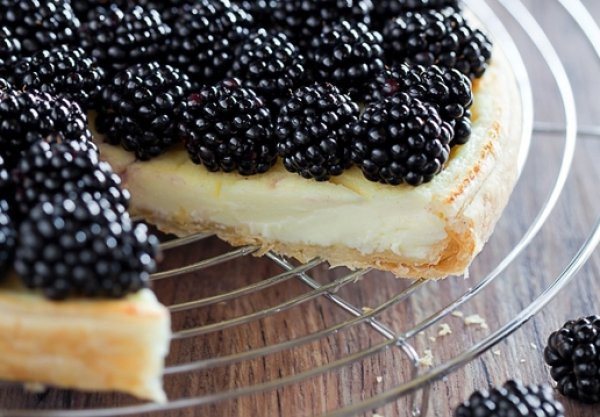

Disease and pest resistance
Like any blackberry, the Reuben hybrid variety is highly resistant to pests and diseases. This does not cancel preventive treatments, especially in greenhouses.
Advantages and disadvantages
Reviews of domestic gardeners about the Ruben variety are contradictory - from admiring to abusive. Time will judge who is right - this blackberry has not yet had time to show all its advantages and disadvantages. Nevertheless, the positive qualities include:
- Good berry taste.
- Reconditioning of the variety.
- The ability to grow a crop without shelter for the winter - by cutting out shoots at the root.
- High transportability of berries.
- Reuben blackberry fruits are beautiful and large - up to 14.5 g each.
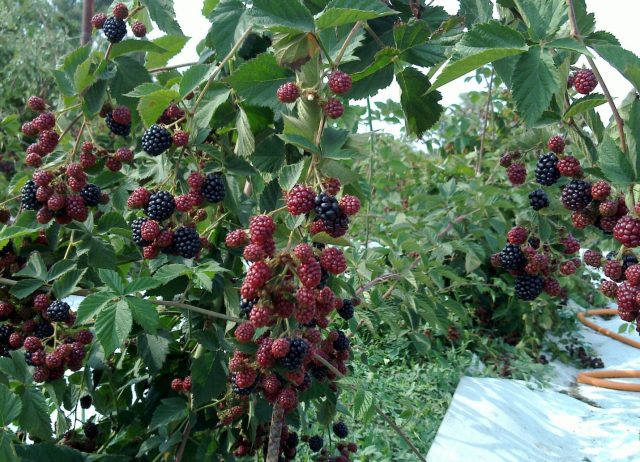

Unfortunately, listing the shortcomings will take up more space:
- Low frost resistance.
- Blackberry Ruben is pollinated only at temperatures below 27-30⁰C and high humidity.
- The inability to grow the variety in regions with cold and temperate climates as remontant because of the late second fruiting.
- Erect blackberries (kumanik) are inconvenient to cover for the winter.
- The shoots have thorns, although they fall off when the berries ripen.
- The need to shade the bushes.
- Reproduction of this variety is difficult.
All these disadvantages, except for the existence of thorns and problems with reproduction, do not matter when growing Ruben blackberries in greenhouses.
Blackberry Ruben - reviews of gardeners
Reviews about the Ruben variety are only positive. Delicious, sweet and juicy fruits are versatile in use. They are used to make baked goods, canning, prepare all kinds of dishes, eat them fresh, and also freeze them for the winter.
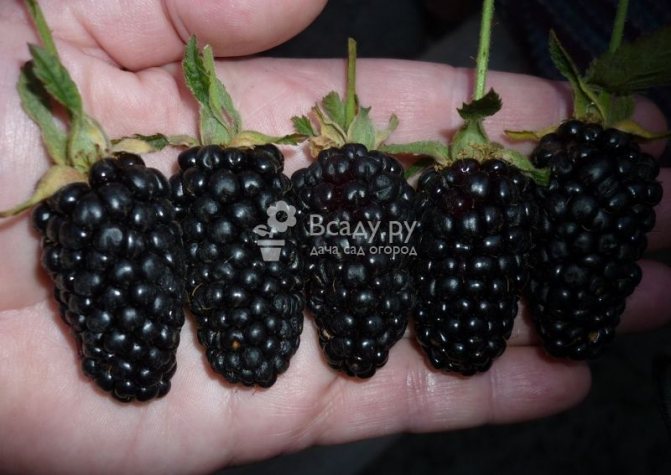

Ruben variety can produce up to 6 kg of berries with proper care
“The plant is not whimsical in cultivation, is not afraid of cold weather and drought, but at the same time it loves moisture. The roots tolerate winter well. "
Vladislav Ilyich, 56 years old, Moscow
“Ruben blackberry bears excellent fruit both in the central regions of the country and in the south. We live in the suburbs, and my grandmother is in Sochi, we grow the same variety. Each bush yields up to six kilograms of berries. "
Maria Petrovna, 34 years old, Moscow region
“Blackberries are best grown in partial shade, next to other bushes or fruit trees. Good as a hedge. However, there is one drawback of the remontant blackberry - in the hot dry summer, the flowers are poorly pollinated, therefore the yield decreases. "
Angela Ivanovna, 43 years old, city of Vladimir
Reproduction methods
Unlike other varieties, reproduction of the Ruben remontant blackberry is difficult. Amateurs can plant a few shoots or divide an overgrown bush. Cutting in the open field does not lead to success, and in closed rooms you need to use greenhouses, growth hormones and phytolamps. It is problematic to propagate by layering and pulping the kumanik because of the upright powerful shoots.
Important! Trimming the tops of the shoots, optional for the Ruben variety, stimulates the formation of more root shoots.
Harvesting and storage
Blackberry Ruben is a plant with an early ripening period, so the first harvest can already be taken in the last days of June, and the next one - in September-November. The fruits should be plucked together with the stalk, but it is better to cut them off so that they are stored longer. The shelf life of Ruben blackberries at room temperature is 4 days, in the refrigerator - almost 3 weeks.
Blackberry Ruben rightfully belongs to the promising varieties. It is unpretentious and produces large berries. It is enough to adhere to the correct agricultural techniques in order to collect a rich harvest.
Landing rules
Reuben reaches its full potential in greenhouses. But few gardeners grow this crop in greenhouses. We will describe planting and caring for Ruben blackberries in dachas and personal plots.
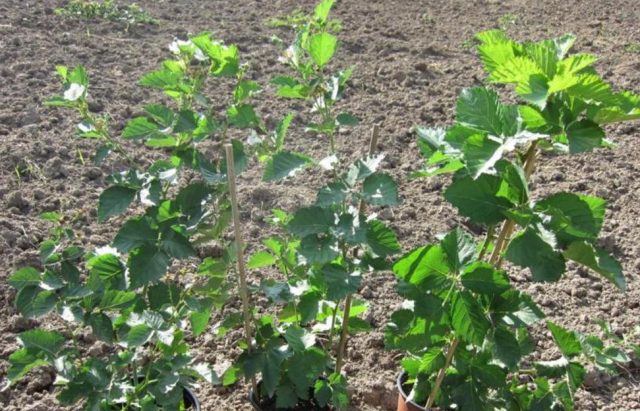

Recommended timing
In the southern regions, the Reuben blackberry is planted in the fall, when the temperature drops to moderate, but no later than a month before the onset of frost. So the culture will have time to take root. When planting in spring, the sudden heat can destroy the seedling.
In temperate climates and in the north, blackberries are planted when the soil warms up. Long spring and mild summer contribute to the good survival rate of the bush.
Choosing the right place
Unlike other varieties, Ruben's blackberry prefers partial shade, especially in the south. But the lack of sunlight prevents the berries from ripening. So the place must be chosen carefully.
Groundwater should not approach the surface closer than 1 m.The soil requirements for the Reuben variety are the same as for other blackberries: a slightly acidic reaction, light loams, a large amount of organic matter.
Soil preparation
It is advisable to dig the planting holes in advance, measuring 50x50x50 cm. The nutrient mixture is prepared from the upper fertile layer of the earth, a bucket of humus and starting fertilizers (potassium - 50 g, phosphorus - 120-15 g). Sour (red) peat is added to alkaline or neutral soil. Too dense clay soils are improved with sand, carbonate soils - with additional doses of organic matter. Lime is added to an overly acidic soil.
Selection and preparation of seedlings
The Ruben variety is a novelty, you need to buy it directly in the nursery or in proven retail chains. You will most likely get some other blackberries from your hands. The varietal feature is the light gray bark on adult shoots.
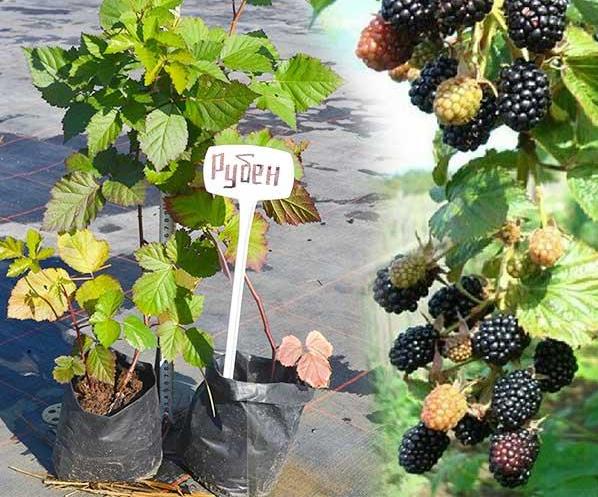

The root system should be well developed and smell like fresh soil. Smooth, flexible and smooth shoots are a sign of the health of the blackberry.
Pre-planting preparation consists in watering a container plant or soaking an open root for 12 hours.
Algorithm and scheme of landing
For Ruben blackberries, both a sparse (1-1.3 m between plants) and a compacted (0.8 m) planting are possible. The rows should be 2 m apart from each other.
A 2/3 dug planting hole is covered with a fertile mixture and filled with water. After 10-14 days, you can start planting:
- In the middle of the hole, fill in an earthen mound, around which spread the roots of the blackberry.
- Fill and compact the fertile mixture so as to deepen the neck by 1.5-2 cm.
- Water the blackberries, using at least 10 liters per bush.
- Mulch the soil.
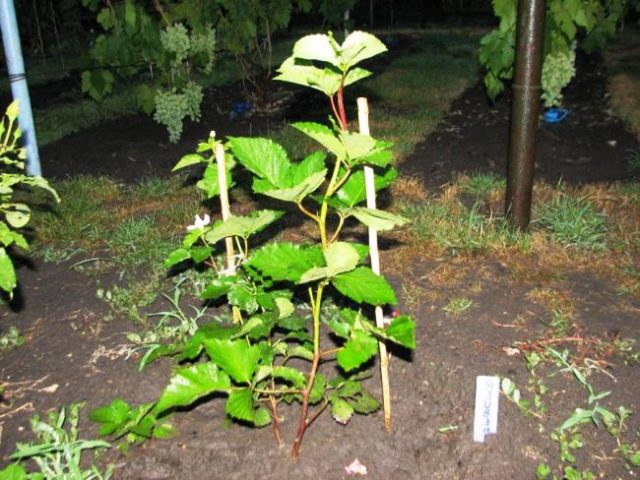

The history of the creation of a remontant variety
Blackberries in the 19th century were considered exclusively as an ornamental garden plant. In Europe, it began to be grown as a fruit and berry crop a hundred years later. The development of new varieties and the improvement of existing ones were actively pursued by gardeners in America and Mexico. There, blackberries were already an industrial crop.
Blackberry Ruben
The main advantages of the berry were its taste, unique aroma, richness with vitamins and good preservation during transportation. In addition, the berry turned out to be quite easy to grow, it tolerated drought and cold well. Over time, breeders have developed thornless shrub species, which simplified the process of industrial harvesting on plantations.
Repaired blackberries are propagated by root buds or cuttings. The bush is dug up with the root, the cutting with part of the rhizome is separated from the mother bush. Then it is planted in the prepared soil. It is better to do this in the fall, so that the bush takes root in the winter. Blackberry roots develop intensively in depth and in width. For quick rooting of the cuttings, it is necessary to loosen the soil around the planting with a diameter of 60-70 cm.
Reproduction of remontant blackberries by cuttings
Planting depth depends on the selected planting material. Green cuttings or root suckers are sealed to a depth of 8-10 cm, and seedlings with a developed root system are planted in holes 60-70 cm in diameter.
The soil mixture is prepared like this - humus and wood ash are added to the ground. Part of the resulting substrate is fertilized with 75 g of mineral fertilizers and poured onto the bottom of the hole. Then the rest of the mixture is poured in a conical manner and fathoms are placed on it. The roots are evenly laid out on the sides of the mound and sprinkled with earth.
The culture can be propagated by seeds. They are preliminarily kept in the refrigerator. Sprouts hatch better in wet sand or peat crumbs. When the second leaf appears, the plant is planted in fertilized soil in a pot or in a permanent place. In winter, you can grow planting material at home. Such a seedling will grow into a real bush in the 2-3rd year and begin to bear fruit. The quality and properties of the berries does not deteriorate.
Blackberry Ruben
The main advantages of the berry were its taste, unique aroma, richness with vitamins and good preservation during transportation.In addition, the berry turned out to be quite easy to grow, it tolerated drought and cold well. Over time, breeders have developed thornless shrub species, which simplified the process of industrial harvesting on plantations.
Repaired blackberries are propagated by root buds or cuttings. The bush is dug up with the root, the cutting with part of the rhizome is separated from the mother bush. Then it is planted in the prepared soil. It is better to do this in the fall, so that the bush takes root in the winter. Blackberry roots develop intensively in depth and in width. For quick rooting of the cuttings, it is necessary to loosen the soil around the planting with a diameter of 60-70 cm.
Reproduction of remontant blackberries by cuttings
The soil mixture is prepared like this - humus and wood ash are added to the ground. Part of the resulting substrate is fertilized with 75 g of mineral fertilizers and poured onto the bottom of the hole. Then the rest of the mixture is poured in a conical manner and fathoms are placed on it. The roots are evenly laid out on the sides of the mound and sprinkled with earth.
The culture can be propagated by seeds. They are preliminarily kept in the refrigerator. Sprouts hatch better in wet sand or peat crumbs. When the second leaf appears, the plant is planted in fertilized soil in a pot or in a permanent place. In winter, you can grow planting material at home. Such a seedling will grow into a real bush in the 2-3rd year and begin to bear fruit. The quality and properties of the berries does not deteriorate.
Repairing varieties of berry crops are popular all over the world. The ability to harvest already on the shoots of the first year makes Ruben blackberries very valuable for gardeners who like to use blackberries not only fresh, but also to harvest jams, jams or compotes from these berries.
This remontant blackberry appeared thanks to the selection work of the professor and scientist from the University of Arkansas (United States of America) John Reuben Clark. This breeder is the creator of a number of blackberry varieties, but it was the Ruben variety that brought him the greatest fame.
At the beginning of this century, the seeds of a new variety were obtained by cross-pollination of varieties A-2292T and APF-44, which were shipped to England. At the end of the next season, one of the seedlings grown from these planted seeds was selected (the code of which is НРВ3), which already in the first year gave a good harvest of large berries.
Follow-up care of the culture
Reuben blackberries need to be cared for carefully, especially outdoors. This is a new variety that has a number of features to consider when growing.
Growing principles
Despite the fact that Ruben's blackberry belongs to kumaniks - erect varieties with powerful shoots, an adult bush needs a garter. In the first year after planting, the plant can do without a trellis.
In the third year, the Ruben variety comes into full force, its shoots grow up to 2-2.5 m and bend under the weight of flowers and berries. It's not good if part of the crop ends up on the ground. For garters, you can use any trellis: multi-row, T, E or V-shaped.
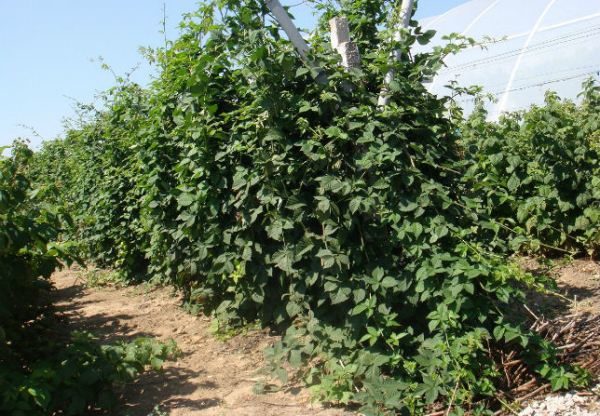

Yield is influenced by many factors - from agricultural technology to weather conditions. Good fruiting can be achieved only if all recommendations are followed, which is most easily achieved in greenhouses.
In order to speed up fruiting in the open field for 10-14 days, in early spring, arches are installed over the blackberries or simply cover the bush with white agrofibre until the shoots reach half a meter growth.
Necessary activities
The first time after planting, the bush needs to be watered twice a week, spending at least 5 liters of water for each plant. Blackberries are generally a moisture-loving crop, and the Reuben variety does not differ in high drought resistance.
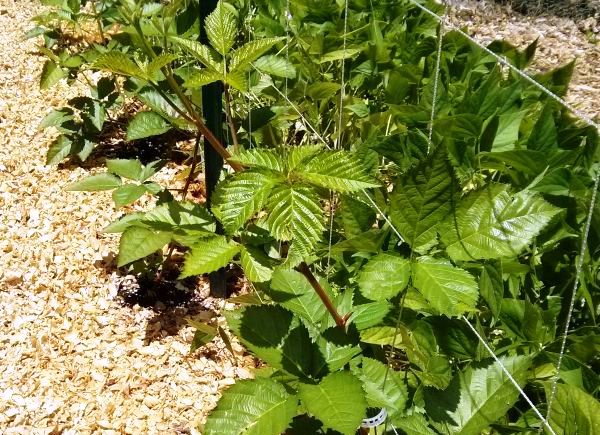

In the spring, immediately after removing the shelter, the culture is fed with nitrogen. At the beginning of flowering, they give a complete mineral complex. During the formation of berries, blackberries are fertilized with a solution of mullein infusions (1:10) or herbs (1: 4).In autumn, potassium monophosphate gives good results. Foliar dressings with the addition of chelates are useful for blackberries. In hot weather, it is recommended to spray the Ruben variety every 10-14 days alternately with epin and zircon.
Important! Fertilizers containing chlorine are contraindicated for any blackberry.
To increase moisture and retain water in the soil, it is recommended to mulch the soil under the bushes with sour peat. It is necessary to loosen the ground in spring and autumn. A layer of mulch in summer will not only increase humidity, but also prevent weeds from germinating.
Shrub pruning
If the Reuben variety is grown as a one-time crop, all shoots are cut out before hibernation. In the spring, new lashes will appear, on which the harvest will ripen.


An adult Ruben blackberry bush is formed, leaving 6-7 shoots. You do not need to pinch them - with sufficient feeding, side branches are formed in sufficient quantities. Throughout the season, sanitary pruning is carried out - they remove broken, weak or dried out sections of the lashes.
Preparing for winter
If the blackberry variety Reuben is grown as a once-fruitful crop and all shoots are cut off before winter, it will be enough to fill an earthen mound above the root. This is how roses are sheltered in southern and temperate climates.
In order for the variety to show remontability, before the onset of frost, the shoots are removed from the trellis, the last year's are cut out, and the growth of the current season is tied, tilted to the ground, and fixed. You can arrange a tunnel shelter or use spruce branches, straw, agrofibre and dry soil for insulation.
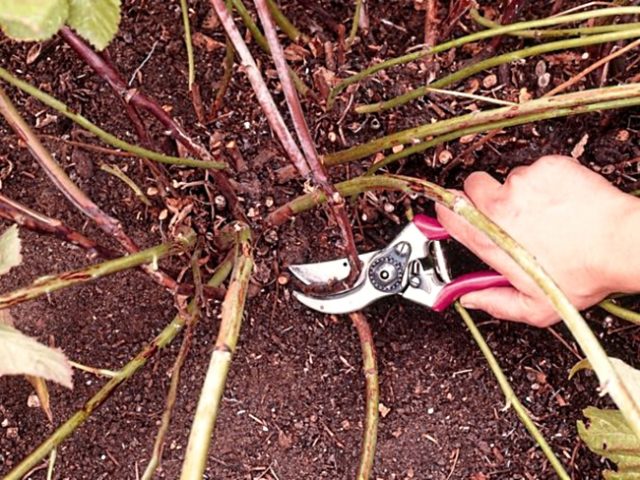

Comment! The shoots of Ruben's blackberry, although powerful, are flexible, besides, they have already lost their thorns. This makes it at least a little easier to cover the bush for the winter.
Growing features
Flowering ends with abundant fruit set in a cool, protracted spring. Frosty winter does not harm the roots and shoots left... They are covered with straw, cardboard, spandbd. Blackberries love moisture, but tolerate dry periods without damage. If there is no rain, then once a week you need to water the bush with two buckets of water. It's enough.
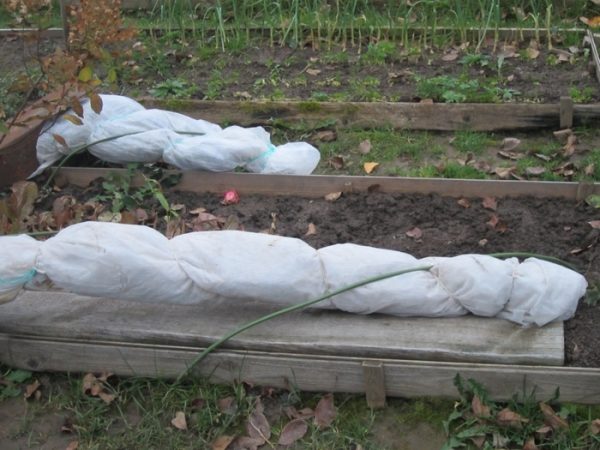

Preparing blackberry bushes for winter
All sprouted shoots are cut out in the fall under the root.... Ruben is the earliest ripening variety of garden blackberries. She manages to give powerful shoots, foliage and two harvests of berries. For a successful growing season, the bushes should be planted in partial shade in a place protected from the wind. Distance between seedlings - not less than 100cm.
Flowers develop well and fertilize in wet weather. 7-8 days before flowering, the roots are watered abundantly, evaporating moisture creates a comfortable microclimate for the plant. With industrial cultivation during this period, they include a small-drop irrigation system and protect the bushes from direct sunlight. To ensure bountiful harvests in the future, at first it is necessary to give the opportunity to develop the root system.
New seedlings are planted in the ground at the end of autumn.
The number and size of berries depends on the correct and timely moisture of the soil. The plant should not be flooded, but the earth should not be allowed to dry out either. An important role is played by mulching the periosteal circle.... Straw or grass is placed in a thick layer.
Diseases and pests: methods of control and prevention
The Ruben variety is rarely affected by diseases or pests. Preventive treatments should be carried out in spring and autumn with preparations containing copper. Greenhouses have their own processing system, different from open ground, you need to adhere to it. But there is no danger that the neighborhood with other crops (raspberries, strawberries, nightshades) will transmit unwanted diseases to the blackberry.
The culture often suffers from chlorosis, and it lacks iron. It is best to replenish the deficiency of this element by spraying the bush with chelates.
Care after planting seedlings
The plant does not require special care, but the main agrotechnical measures will have to be performed. The basic principles of caring for this blackberry: timely watering, loosening row spacings, eliminating weeds, applying top dressing, pruning, shelter for the winter.
In the spring and autumn, this berry perennial is watered twice a month; in summer, during a dry hot season, the bushes should be watered abundantly daily. At least 10 liters of water should be applied under each bush.
Top dressing should be applied every 25-30 days. Usually, fertilizers containing nitrogen and humus are alternated. In the summer, under each bush, it is recommended to bring well-rotted cow dung.
Blackberry shoots should be pruned annually in the fall. This procedure is carried out in early - mid-November (a couple of weeks before the onset of frost on the ground). Shoots are cut almost at the root, leaving small knots on the surface (no more than 3-5 cm high). This procedure allows the plant to winter better, and is also a rejuvenating pruning of bushes.
So that the plant and fruits are not affected by gray rot, you should not regularly overmoisten the soil in the near-stem circles of the bushes.
This shrub is also extremely rarely damaged by pests. The only "harmful" bugs that sometimes infect plant foliage and stems are leaf aphids. They fight these pests as follows: they spray the foliage on both sides with a tobacco solution.

